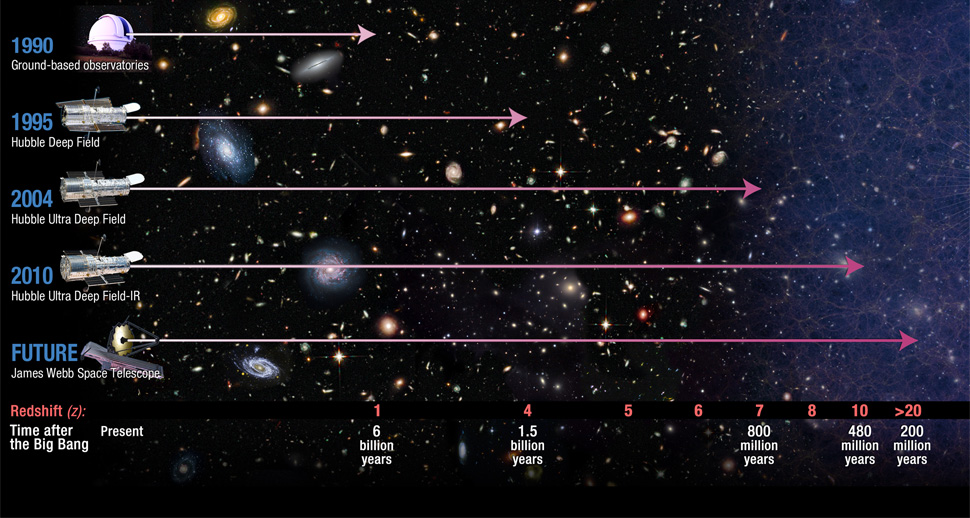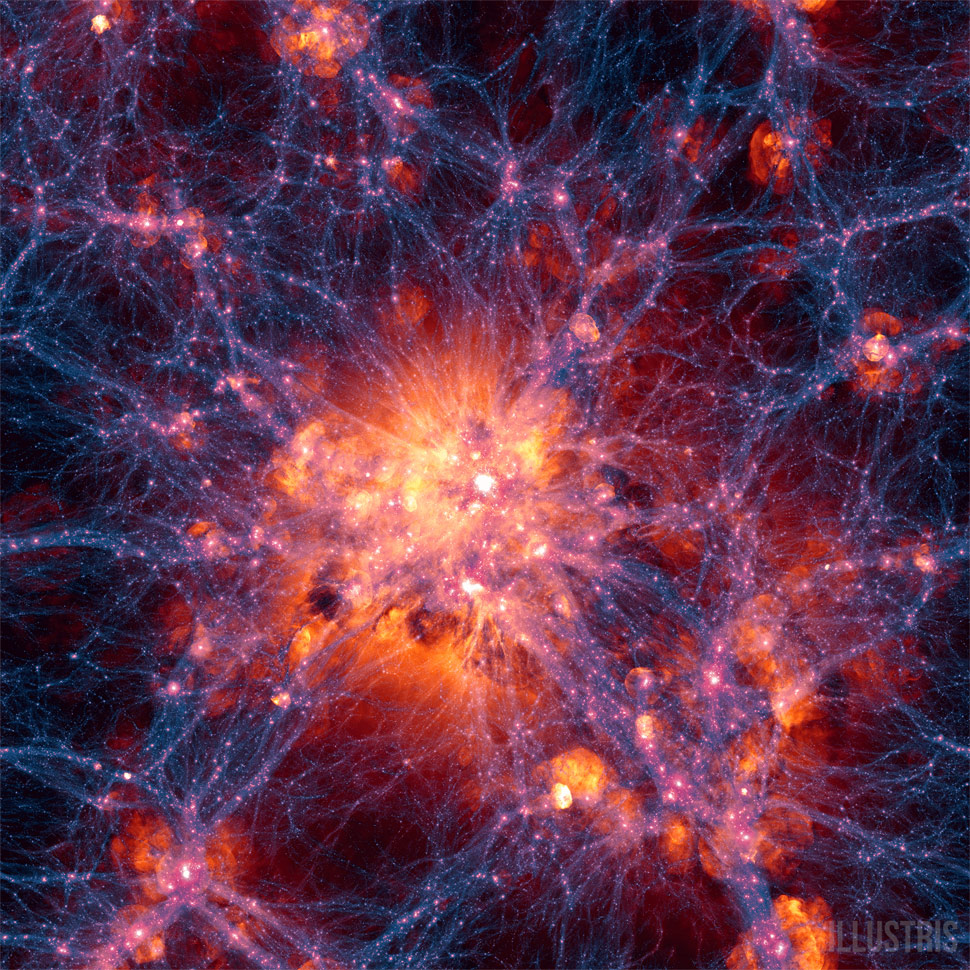
5th November 2016 Construction of the James Webb Space Telescope mirror is completed After 20 years of development, the successor to the Hubble Space Telescope has reached a major milestone, with its primary mirror now complete and ready for testing prior to a 2018 launch.
In the massive clean room of NASA's Goddard Space Flight Centre, assembly was finished this week on the James Webb Space Telescope's (JWST) primary mirror. Thousands of people have been involved in its design and construction, including a member of the FutureTimeline forum. The JWST will replace the aging Hubble Space Telescope (launched in 1990) and provide a fresh pair of eyes on the universe. It will offer unprecedented resolution and sensitivity from long-wavelength visible light, through near-infrared to the mid-infrared. While Hubble has a 2.4 m (7.9 ft) primary mirror, the JWST features a much larger 6.5 m (21.3 ft) mirror, composed of 18 hexagonal segments each measuring 1.3 m (4.2 ft). When combined, these will offer seven times the light collecting area of Hubble, alongside instruments that are 100 times more sensitive. Located near Sun–Earth Lagrange point 2, about 1.5 million km (930,000 miles) from Earth, a large sunshield will keep its mirror and science instruments below 50 K (−223°C; −370°F). This will minimise interference from external sources of light and heat (like the Sun, Earth, and Moon) as well as from heat emitted by the observatory itself. When fully operational, the JWST will be the most powerful space telescope ever built, capable of seeing the very first generation of stars which ignited less than 200 million years after the Big Bang – a time when the universe was about 1.4% of its current age.
"Today, we're celebrating the fact that our telescope is finished, and we're about to prove that it works," said John Mather, senior project scientist, at the press conference in Maryland. "We've done two decades of innovation and hard work, and this is the result – we're opening up a whole new territory of astronomy." The telescope would be powerful enough to spot a bumblebee on the Moon's surface, explained Mather – both in its reflected light, and from body heat emitted by the insect. Its mirrors are so smooth that if you scaled the array to the size of the U.S., the hills and valleys of irregularity would be only a few inches high. After launch phase environment testing at Goddard Space Flight Centre in Maryland, more cryogenic tests will be performed at the Johnson Space Centre in Houston, Texas. The mirror will then be transported to Northrup Grumman in Los Angeles for the final phase of construction that will connect it to the sunshield and spacecraft bus. If all goes according to plan, the mission will be launched in October 2018. There are four primary scientific objectives: • to search for light from the first stars and galaxies that formed in the Universe after the Big Bang;
These goals can be achieved more effectively by observation in near-infrared light, rather than light in the visible part of the spectrum. For this reason, the JWST's instruments will have a much greater capacity for infrared astronomy than Hubble – allowing the study of far more objects and regions obscured by gas and dust; such as molecular clouds where stars are born, circumstellar disks that give rise to planets, and the cores of active galaxies. One of the early goals of the JWST will be to gather enough data to answer which theory is correct about the phenomenon of the dimming light around the mysterious star KIC 8462852. With a history of major cost overruns and delays, the JWST almost didn't happen. The first realistic budget estimates were around $1.6 billion with a planned launch date of 2011. In that year, however, the U.S. House of Representatives voted to terminate funding, after $3 billion had been spent and 75% of its hardware was in production. Funding was later restored, but capped at $8 billion, with a revised launch date of 2018. The costs have now exceeded $8.7 billion, according to mission director Bill Ochs at this week's news conference. The JWST is being launched by an Ariane 5 rocket supplied by the European Space Agency (ESA). An adapter ring will be included, in the unlikely event that a major deployment problem occurs. This could be used by a future spacecraft to grapple the observatory. Because of its remote distance, however, the telescope itself will not be serviceable – astronauts will be unable to reach it to fix instruments, unlike the much closer Hubble. "It's critically important to get it right here on the ground, and that's the purpose for the tests that we're doing here and, most importantly, for the tests when we get it down to Johnson [Space Centre] in Chamber A, the big vacuum chamber," said NASA Administrator Charles Bolden. The JWST is designed to have a minimum lifetime of 5.5 years after launch, but NASA hopes it can remain in operation for 10 years or more. A number of other, even larger observatories have been proposed for the 2030s and beyond. These include the 11.7 m (38.3 ft) High-Definition Space Telescope and a longer-term concept for a robotically assembled telescope reaching 100 metres in size. Given these trends in observational capability, combined with exponential growth in the number of exoplanets being found, it seems likely that alien life signatures will be detected in the not-too-distant future.
---
Comments »
|









